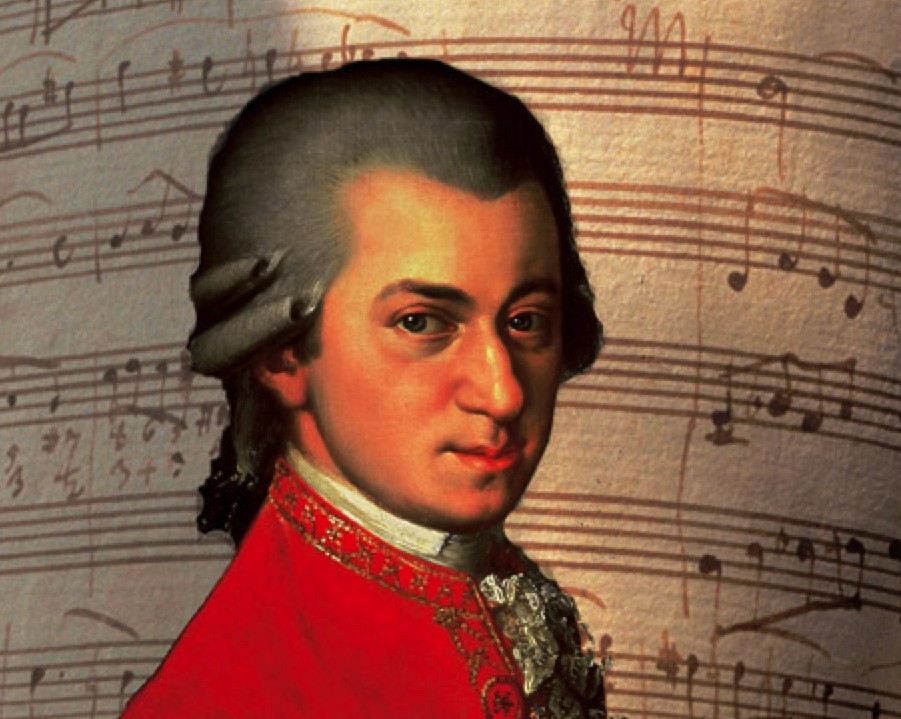
During the last third of July, I performed in the MostArts Festival Orchestra, along with some chamber music in the small village of Alfred, NY. We had many musicians from regional orchestras around the state, but some came from overseas, including Hawaii and Sao Paulo, Brazil. Considering the limited rehearsal time to prepare for 5+ performances in the course of a week, I was very pleased with the teamwork, comradery, overall quality, and respect for one another. It was great to see old colleagues and meet many new ones.
For me, the most challenging part of the festival was its annual Youth Pianist Competition. Part of the final round of the competition involves the candidates to perform a Mozart piano concerto with the festival orchestra. We played two all-Mozart programs on consecutive nights, along with dress rehearsals with the soloists just a few hours before each concert. Out of all the repertoire we played, Mozart proved to be physically the most challenging, even though it’s not as “technically demanding” by comparison. In addition to the concerti, we also played a couple of Mozart’s famous overtures and the famous serenade Eine Kleine Nachtmusik.
The Challenge of Mozart in Orchestra
Anyone who has played any Mozart in a chamber orchestra knows the challenge of creating an elegant ensemble blend, expression, balanced dynamics within the string section, and full commitment to staying engaged from beginning to the very end. Everything is exposed. Here are 17 tips on playing Mozart well in a string section. These are all things that I continue to work on – it’s an endless practice for us all. I won’t go into much detail or give examples here, because each tip can easily turn into a class and go off on a tangent.
- Observe Mozart’s articulations and length of notes with great care. Start from the string and watch the section leader’s bow. (e.g. – if they are playing martelé at the tip, don’t play at the balance point) Match bow distribution the best you can.
- Agree on nuance and inflection in the phrasing with other sections.
- Dynamics are relative. For example, a fortissimo section of repeated 16th notes is often an accompaniment to a melody elsewhere in the ensemble. Don’t play them as loud as possible; just create a healthy tone that will complement the melody. On the other end of the spectrum, remember that in order to create a piano dynamic in orchestra, we must play much softer than if we were playing piano as a soloist. Consider the combined sound of all the instruments of the section. Aim to play softer than your stand partner during pianissimo. Hopefully they can reciprocate this challenge.
- Let the harmonic functions guide the phrasing. Highlight suspensions, dominant chords, dissonances, and deceptive cadences. Adding crescendo and diminuendo markings is a helpful way to unify phrasing within a section.
- Avoid unintended accents with the bow. Play with a healthy tone in fortes, but don’t stick out of the section.
- “Brushy” off-the-string playing is usually favorable. Tilt the bow and add a little length, if needed.
- Focus on clarity and cleanliness in trills and other ornaments. Pay attention to appoggiaturas vs accacciaturas (ie – melodic suspensions vs grace notes). One is played in a specific rhythm on the beat while the other is quick, before the beat. Match the others in your section.
- Generally, aim for elegant tapering at the ends of phrases, unless the music is being passed to another musician or section in the orchestra to create a longer phrase.
- Don’t crescendo if it doesn’t say so in the music (unless the conductor specifically tells you to make one). Sometimes it’s tempting to add a crescendo leading up to a cadence, but usually the thickening texture in the orchestration and quicker rhythmic values already create that crescendo effect all on its own. No need to add extra.
- Generally, keep the vibrato narrow and focus on phrasing with the bow.
- Outside of rehearsal, practice playing pianissimo with very slow bow strokes at the frog and within the lower half. This occurs frequently in Mozart’s orchestra parts, especially during slow movements. These are motions seldom practiced in warmups, so they can induce a lot of tension even in very seasoned players. This is especially true for 2nd violin parts, which are more strenuous due to prolonged playing on the lower strings.
- Mind your posture. Engage your core to protect the lower back and consider whether or not you will use the back of your chair for support. Notice how your jaw feels and release any tension here. Breathe into your back and feel the ribcage expand on the inhale.
- Keep the bow hold loose.
- Subdivide! Especially where there are ties, dotted rhythms, and 32nd notes – especially in slow movements. Again, start from the string for rhythmic unity.
- Listen to the other sections and notice how their parts fit in with yours. Who drives the rhythm and where does it change?
- Notice if your part is doubled by a woodwind or french horn. This is a great opportunity to blend the tone.
- Listen to the ensemble for clean intonation, with special attention to the basses and cellos for the harmonic foundation.
